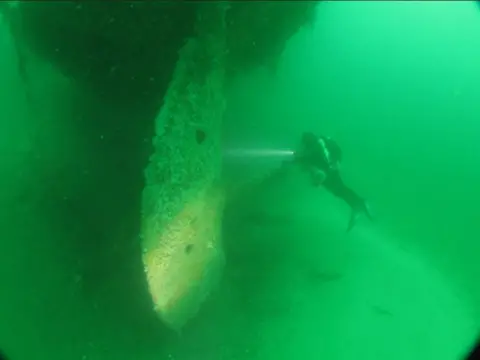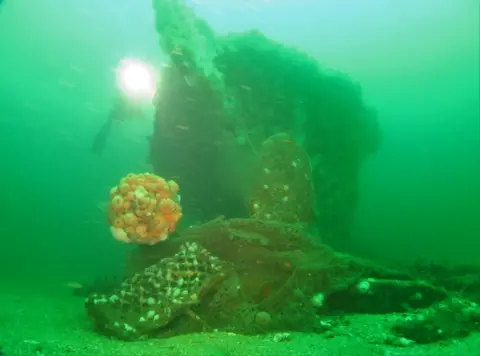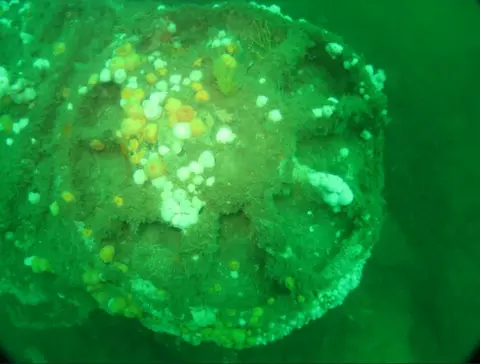Search for fish prompted 37-year shipwreck quest
 BBC
BBCA hunt for better fishing grounds led a man to spend over three decades documenting more than 2,000 shipwrecks in the Irish Sea.
Adrian Corkill's interest in finding vessels lost in the waters around the Isle of Man was sparked in 1987 when he started fishing in a boat on a wreck off Laxey in his spare time.
Curious about the ship on the seabed below, he began researching its story, and went on to uncover 150 other wrecks.
Having complied a database of more than 2,000 wrecks, nearly 2,000 wreck sites, and about 1,100 vessels, the 58-year-old transferred the information to Manx National Heritage for safekeeping.
 LEIGH MORRIS
LEIGH MORRISLooking back on his 37-year hobby, Mr Corkill said his interest was initially "fish-orientated".
"I thought the wrecks are good places for fishing, and if you can find more wrecks then you can get more fish."
But as time went on his interest intensified, and culminated with him learning to dive to broaden the range of wrecks that could be reached.
While a ship's bell was the most straightforward way of identifying a vessel, finding it was not always that simple.
"It's a detective story. Sometimes you're lucky and you get the bell straightaway, and that's job done.
"Other times you can dive a wreck repeatedly and still not find the bell.
"It's probably covered in debris, because a lot of the wrecks are quite collapsed.
"If a bell falls within the wreckage it can be buried underneath metal or sand, so it will be there somewhere.
"My practice was I would never enter a wreck because to go inside something that's inherently unstable to me was too risky. They might seem like static objects but they're not, they're deteriorating quite quickly."
He said that even with the bell, piecing together a record about a ship could take "weeks, months or years" in some cases.
The information had to be gathered from court, police and customs records and registers along with newspaper reports.
 LEIGH MORRIS
LEIGH MORRISThe ship that kindled his enthusiasm was The Bellina, a Liverpool-registered steamship that operated between that port and County Mayo in the west of Ireland.
It went missing in January 1882 with 15 crew aboard.
"Nobody witnessed her loss, she just disappeared.
"And then about a week later there started to be bodies washed up or dredged up by fishing boats off the east coast of the Isle of Man, and then a mast appeared in the water off Laxey, so people knew that she'd gone down about 7 miles south east of Laxey."
"To this day I still don't know why she was lost, but there was a big court case about it in Liverpool. So it's quite a fascinating story."
Mr Corkill's years of work were recognised earlier this year when he received the island's highest cultural award from Culture Vannin, the Reih Bleeaney Vanannan.
He said: "I was extremely pleased by that because the recognition of doing the work and actually creating this resource that can be used by other people. It gives you a lot of pride."
The information has been made available worldwide through Manx National Heritage's online Historic Environment Record.
 LEIGH MORRIS
LEIGH MORRISMr Corkill's decision to hand the database over to the custodians of the island's history came after he was diagnosed with Parkinson's disease.
He said readying the information for the transfer helped him while he was coming to terms with the diagnosis.
On handing it over, he said he felt "quite relieved in a way", because it was in "safe hands".
He hoped it would "provide inspiration to others that you can still achieve things even with significant medical issues".
"And to know it's going to be taken forward after I'm no longer here, it's going to be useful to others.. that's the beauty of it."
Why not follow BBC Isle of Man on Facebook, and X? You can also send story ideas to [email protected]
